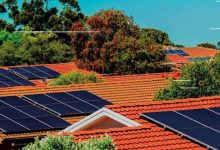The Australian Energy Market Operator is pushing for new powers to “switch off” rooftop solar as a matter of urgency, saying the technology is posing system risks on multiple levels, including minimum demand, voltage management and system strength issues.
AEMO insists that the ability to “shed” newly connected rooftop solar systems would only be used “as a last resort” and on very rare occasions, but would be a critical important tool as the amount of rooftop solar PV continues to grow, potentially accounting for close to 40 per cent of total demand by 2040 in some scenarios.
The latest Electricity Statement of Opportunities focuses in great detail on the growing issues of rooftop solar, which AEMO says can affect voltage management, frequency control, system strength, restart capabilities and push “minimum” demand down to levels where the grid will be difficult to manage.
It is seeking new inverter standards, particularly to ensure they can “ride through” system faults, and is proposing a bunch of market changes that could encourage more demand to create a solar sponge to soak up excess power to make it more manageable.
“The way I look at this is that we are at a point where the volume of rooftop solar can have significant system and market benefits,” AEMO chief executive Audrey Zibelman told RenewEconomy in an interview timed with the release of the ESOO.
“At the same time, rooftop solar PV can create problems if not controlled. We need to have a range of complimentary market designs so we can take advantage of that, create demand profiles that are more efficient.
“One way to mange that is to provide market incentives for people to store (rooftop solar) and use it in the evening. Getting these markets going – these two sided markets – will be critical and a great way to take advantage of the assets. It can become a very cheap resource to use … but we need to get on with it because it is emerging as an issue.
 The ESOO report cites South Australia as the state with the most pressing problem, and where unchecked rooftop solar could push grid demand below zero within a few years. Victoria is next in line. But Zibelman says the issue will be felt across the country, and minimum demand will soon occur in all states during daylight hours rather than overnight.
The ESOO report cites South Australia as the state with the most pressing problem, and where unchecked rooftop solar could push grid demand below zero within a few years. Victoria is next in line. But Zibelman says the issue will be felt across the country, and minimum demand will soon occur in all states during daylight hours rather than overnight.
Zibelman pointed to the issues in California, where load shedding occurred as a heat wave swept across the western states of the US.
“They do have a lot of solar. It was so hot and when the sun began setting the air conditioners over-ran the system. It shows that we have to stay in the sweet spot. I do think they have a robust storage programs – it just shows the importance of looking at these systems, and the changes in climate conditions and taking this into account into planning.
Zibelman pointed to the number of technologies and rule changes that could help address the issue, including increased storage, virtual power plants, demand management, and even electric vehicles, although AEMO’s central scenario suggests a slow uptake of EVs in Australia given the lack of policy support.
But it is the emergency shedding of rooftop solar PV that will be the most controversial aspect, although it is normal for large generators – be they renewable or fossil fuel – to be also directed to shut down depending on the situation.
The ESOO document says that as the amount of rooftop solar PV grows, there may be limited potential to export in when distributed solar PV production is high and demand is low.
“This can be addressed by introducing emergency PV shedding capabilities for new distributed PV installation,” it says. “It is anticipated that PV shedding would only be enabled under rare circumstances, as a last resort to maintain system security under abnormal conditions.”
The report goes through a number of issues that are raising concern. This includes the unexpected tripping of large amounts of rooftop PV. This could in turn affect system strength and inertia requirements, and AEMO will release a dedicated report on this issue before the end of the year.










